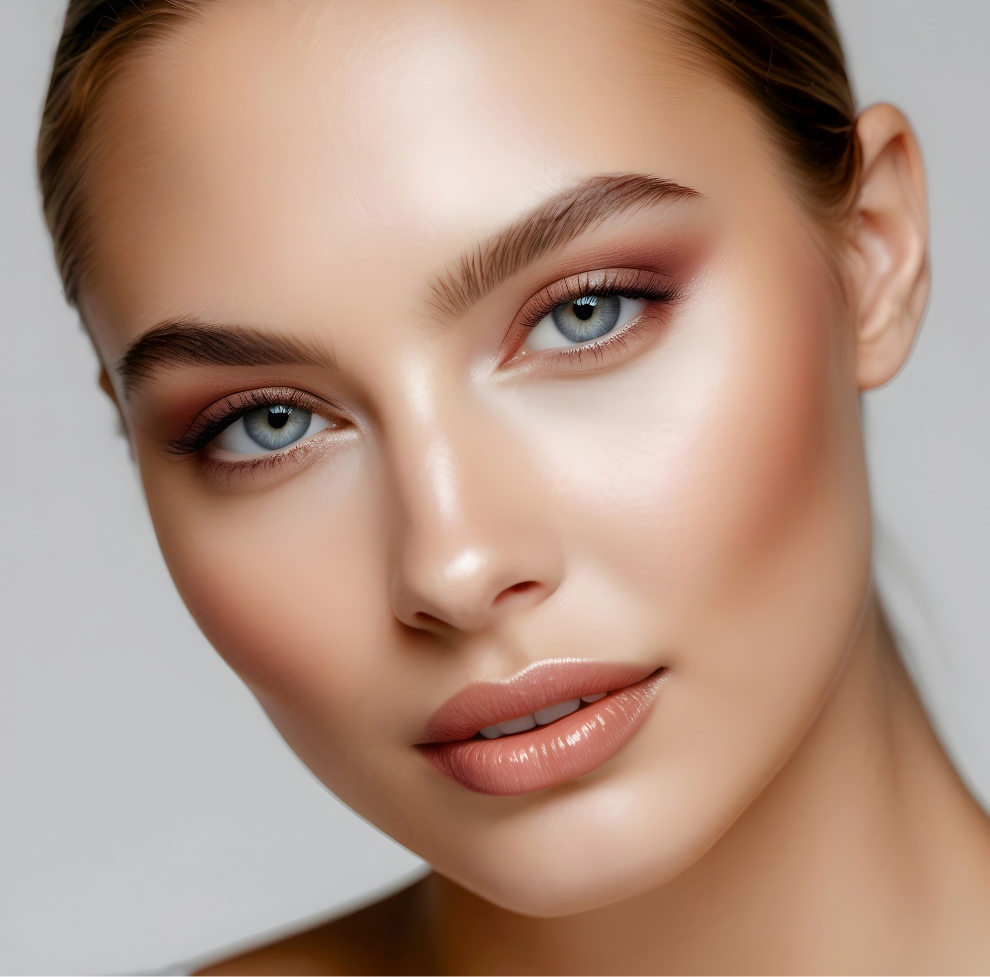Rhinoplasty, commonly referred to as a nose job, is a surgical procedure designed to reshape or enhance the appearance of the nose. It can also serve functional purposes, such as correcting breathing difficulties caused by a deviated septum or repairing nasal damage from trauma. Rhinoplasty is one of the most frequently performed cosmetic surgeries worldwide, and it offers significant improvements in both aesthetics and functionality. Let’s explore Rhinoplasty in Dubai.
What is Rhinoplasty?
Rhinoplasty is a surgery that modifies the structure of the nose, which can involve reshaping the cartilage, bone, or both. The procedure can address a variety of issues, ranging from cosmetic concerns to medical problems, such as breathing difficulties due to a deviated septum. Rhinoplasty is performed by a skilled surgeon to improve the balance and proportion of the nose to the rest of the face, leading to a more harmonious appearance.

Rhinoplasty can achieve several outcomes, including:
Cosmetic Rhinoplasty: Reshaping the nose to achieve a more aesthetically pleasing shape. This may involve reducing the size of a large nose, narrowing nostrils, refining the nasal tip, or addressing a hump on the nose bridge.
Functional Rhinoplasty: Correcting breathing problems or structural issues, such as a deviated septum or enlarged turbinates, which can cause chronic congestion or difficulty breathing.
Reconstructive Rhinoplasty: Repairing the nose after trauma or injury, restoring both its appearance and function.
Types of Rhinoplasty
There are two main types of rhinoplasty: open rhinoplasty and closed rhinoplasty. Each approach has its advantages depending on the complexity of the procedure.
Open Rhinoplasty
Open rhinoplasty is a more invasive procedure in which an incision is made across the columella (the small strip of tissue between the nostrils) to allow the surgeon better access to the nasal structures. This approach provides the surgeon with a clearer view and more flexibility to make precise adjustments, making it suitable for more complex surgeries, such as refining the nasal tip or addressing significant structural changes. The incision is discreetly placed, so any resulting scar is usually well-hidden and fades over time.
Closed Rhinoplasty
In closed rhinoplasty, all incisions are made inside the nostrils, leaving no visible scarring. This technique is typically used for less complicated procedures, such as minor reshaping or correcting small imperfections. While closed rhinoplasty generally results in a quicker recovery and fewer visible scars, it may not provide the same level of access for complex adjustments.
Who is a Good Candidate for Rhinoplasty?
Candidates for rhinoplasty typically have concerns about the appearance or function of their nose. The ideal candidates are individuals who:
Are in good overall health, with no underlying medical conditions that could complicate surgery.
Have realistic expectations about the results and understand the potential risks and limitations of the procedure.
Are dissatisfied with the size, shape, or structure of their nose.
Experience breathing problems, such as a blocked nasal passage or a deviated septum, that can be corrected through rhinoplasty.
Are emotionally and mentally prepared for the changes the surgery will bring, both physically and psychologically.
It is essential to have a thorough consultation with a qualified surgeon to determine whether rhinoplasty is the right option for you. The surgeon will assess your facial structure, discuss your goals, and recommend the best approach for achieving the desired results.

The Rhinoplasty Procedure: Step-by-Step
Rhinoplasty is typically performed under general anesthesia, which ensures that the patient is completely asleep and comfortable throughout the procedure. In some cases, local anesthesia with sedation may be used, especially for minor surgeries. Here is an overview of the typical rhinoplasty process:
Initial Consultation
Before undergoing rhinoplasty, the patient will have a detailed consultation with the surgeon. During this meeting, the surgeon will:
Assess the patient’s facial features, skin type, and overall health.
Discuss the patient's concerns and aesthetic goals.
Use digital imaging to show potential results and help align expectations.
Review the surgical plan, including the technique to be used and the recovery process.
Provide instructions regarding pre-surgical preparations, such as avoiding certain medications and quitting smoking.
Anesthesia and Incisions
On the day of surgery, the patient will be administered anesthesia. The choice of anesthesia—general or local with sedation—depends on the complexity of the surgery and the patient's preferences.
For open rhinoplasty, the surgeon will make an incision across the columella and inside the nostrils. For closed rhinoplasty, all incisions are made inside the nostrils.
Reshaping the Nose
Once the incisions are made, the surgeon will carefully reshape the underlying bone and cartilage to achieve the desired results. This may involve:
Removing or reshaping cartilage to reduce the size of the nose or refine the nasal tip.
Reshaping or repositioning the nasal bones to create a more balanced profile.
Correcting a deviated septum or other structural issues that impair breathing.
Reducing the size of the nostrils or addressing any other concerns related to the shape and symmetry of the nose.
Closing the Incisions
Once the necessary adjustments are made, the surgeon will close the incisions using sutures. In open rhinoplasty, the external incision is carefully closed to minimize visible scarring, and in closed rhinoplasty, the internal incisions are sutured. The surgeon may place a splint on the nose to support its new shape and protect it during the early stages of recovery.
Recovery and Aftercare
After the surgery, the patient will be monitored in a recovery room until the anesthesia wears off. Most rhinoplasty patients are able to go home the same day. The recovery process involves:
Swelling and bruising: Swelling and bruising around the eyes and nose are common, peaking within the first few days and gradually improving over the following weeks. Full recovery can take several months.
Nasal splints and packing: The surgeon may place nasal packing or splints inside the nose to support the new structure and control bleeding. These will be removed during follow-up visits.
Post-operative care: Patients will receive detailed aftercare instructions, including avoiding strenuous activities, refraining from blowing the nose, and keeping the head elevated during the initial healing period. Follow-up visits are scheduled to monitor the healing process and remove any external splints.
It’s important to follow the surgeon's instructions carefully to ensure a smooth recovery and avoid complications. Most people can return to work or school within one to two weeks, but they should refrain from vigorous physical activities for a few weeks.

Risks and Complications
As with any surgery, rhinoplasty carries some risks. While complications are rare, potential risks include:
Infection: Infection can occur, though it is uncommon. Proper aftercare and hygiene can minimize this risk.
Bleeding: Some bleeding is expected after surgery, but excessive bleeding should be addressed promptly.
Scarring: Scarring is typically minimal, especially with closed rhinoplasty, but some patients may experience visible scarring, particularly with open rhinoplasty.
Unsatisfactory Results: In some cases, patients may not be fully satisfied with the results. If this occurs, revision rhinoplasty may be considered after sufficient healing time.
Is Rhinoplasty Right for You?
Rhinoplasty can provide life-changing improvements for many individuals, whether they are seeking cosmetic enhancements, functional improvements, or post-trauma reconstruction. The decision to undergo rhinoplasty is highly personal and should be made with careful consideration and consultation with a skilled, board-certified surgeon.
If you're unhappy with the appearance of your nose or experience breathing difficulties, rhinoplasty may be the solution you've been looking for. A thorough consultation with an experienced surgeon will help you determine if rhinoplasty is the right option for you and ensure that your goals are aligned with the best possible outcome.
Conclusion
Rhinoplasty is a powerful and transformative procedure that can address both aesthetic and functional issues with the nose. Whether you're looking to refine the shape of your nose, improve your breathing, or recover from an injury, rhinoplasty offers a solution that can enhance your overall facial harmony and self-confidence. By understanding the procedure, risks, and recovery process, you can make an informed decision and work with your surgeon to achieve the best results.
If you want to read more about Rhinoplasty:
Is Rhinoplasty Permanent? Unveiling the Longevity of Nose Reshaping
